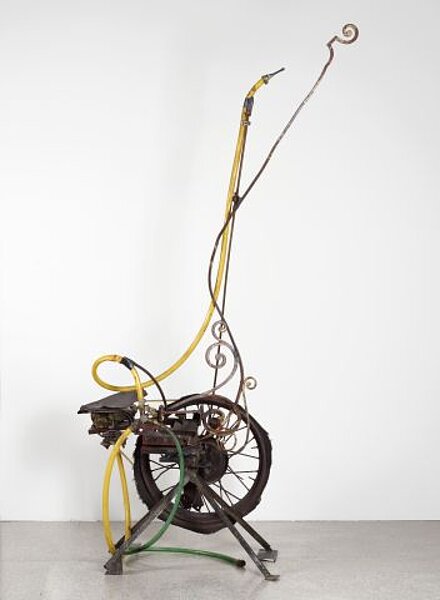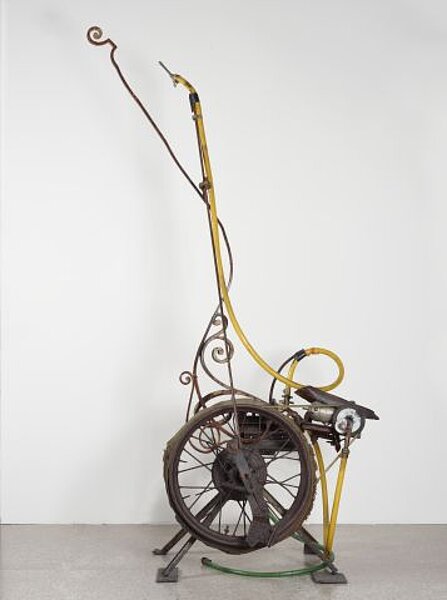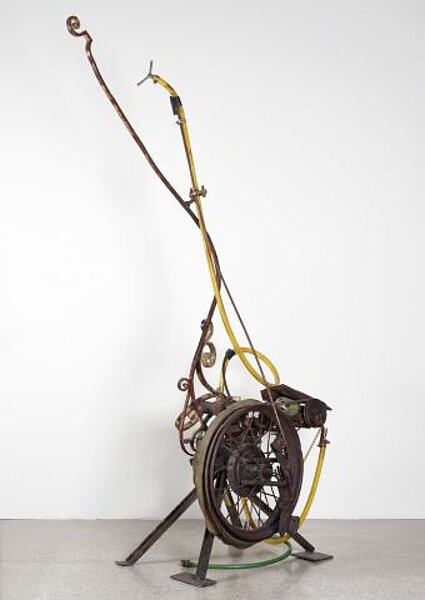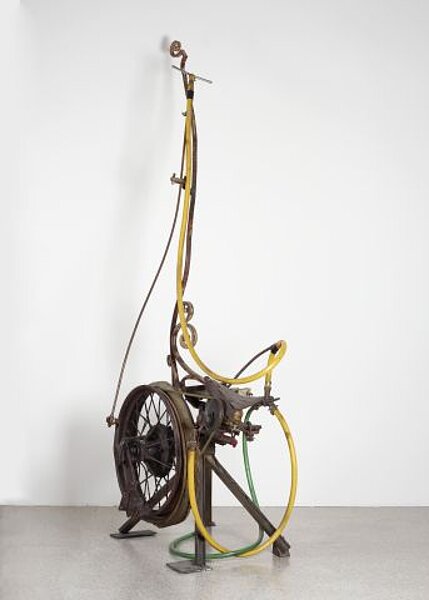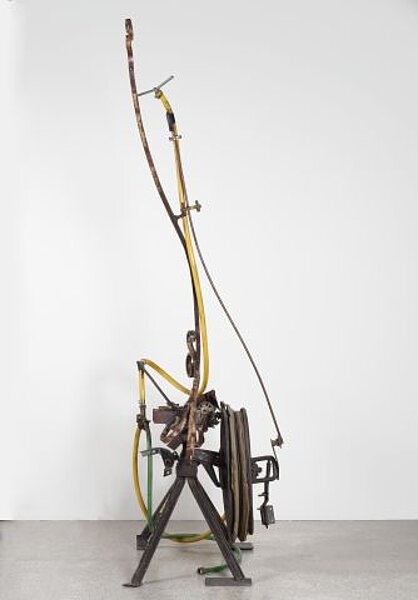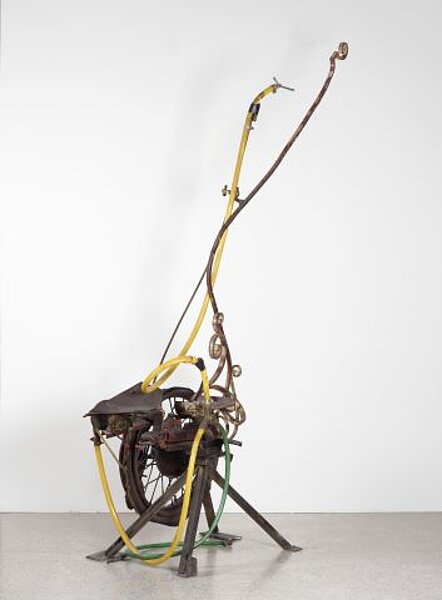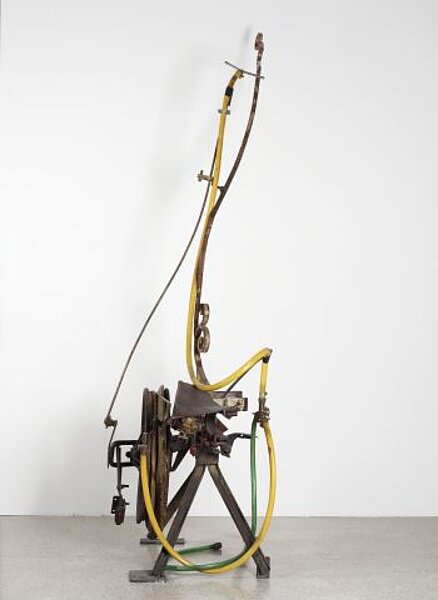
Tinguely, Jean
Demi Baroque
1961 - 1962
| Object description | Iron scrap, rubber hoses, water sprinkler, electric motor |
|---|---|
| Object category | sculpture |
| Dimensions |
Objektmaß:
height: 240 cm,
width: 85 cm,
depth: 70 cm
|
| Year of acquisition | 1978 |
| Inventory number | P 195/0 |
| Creditline | mumok - Museum moderner Kunst Stiftung Ludwig Wien, ehemals Sammlung Hahn, Köln |
| Rights reference | Bildrecht, Wien |
| Further information about the person | Tinguely, Jean [GND] |
| Literature |
Nouveau Réalisme. Schwerpunkte der Sammlung museum moderner kunst.SAMMLUNG HAHN |
Jean Tinguely, who was a founding member of the nouveaux réalistes in the year 1960, formulated an elementary new concept of sculpture with his kinetic sculptures of old iron, scrap, and found objects designed to animate the beholder. Movement of any kind, whether visible or audible, becomes the leitmotif of his art: “The only safe thing is motion, always and everywhere. The wheel that’s all.” “Demi-Baroque” is a construction of iron scraps, rubber tubes, sprinklers, and an electric engine. The components are not just formal elements of composition in the sculpture but fulfill a thoroughly practical purpose. “Demi-Baroque” could originally be used as a fountain or grass sprinkler. The unpredictability of mechanical motion and the adaptability of water reflect the “meta-mechanical” principle in Tinguely’s sculptures. The irony remains unmistakable, in the conversion of trash into a machine that sprays water in uncontrollable dancing movements. A machine that will hardly produce anything but water and that also evokes an opulent (or at least “half-opulent”) style of art, as the title suggests. Ornate forms, presumably taken from an old balcony railing, create the baroque effect, and they also indicate the function of the machine in an immobile state.
© mumok – museum moderner kunst stiftung ludwig wien
